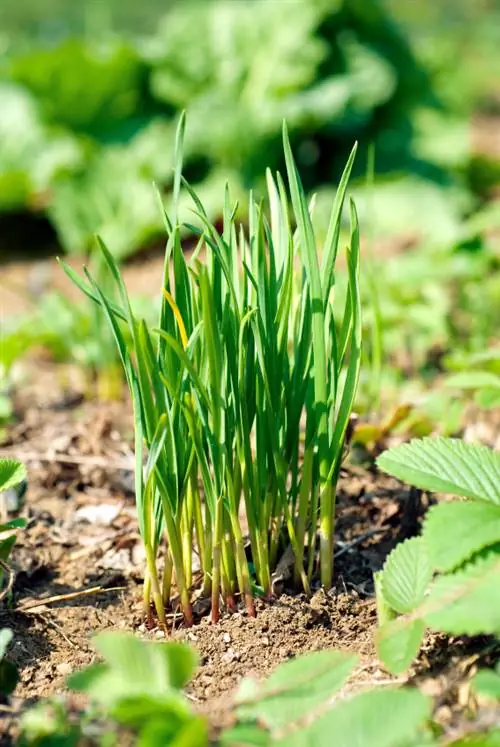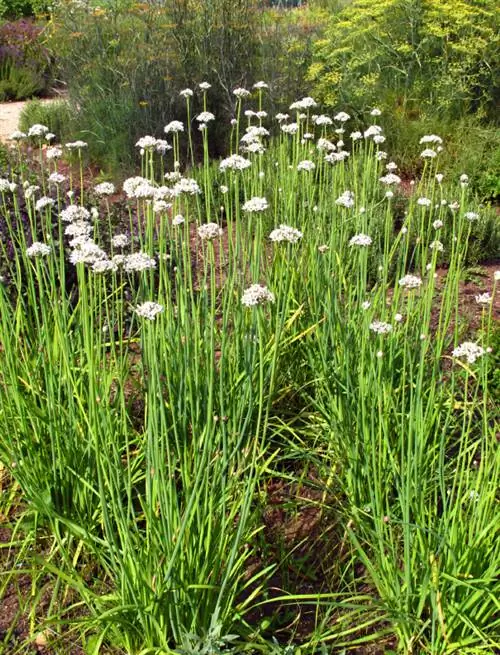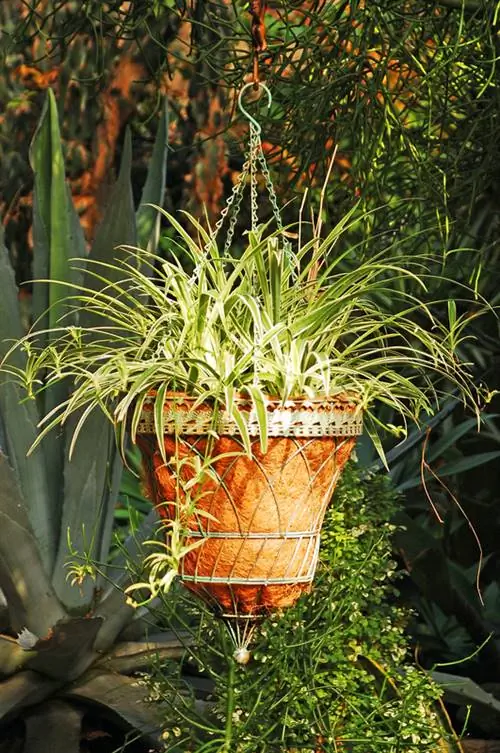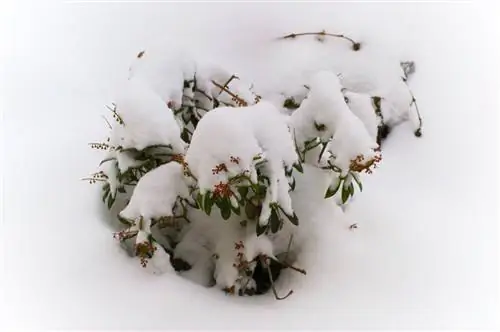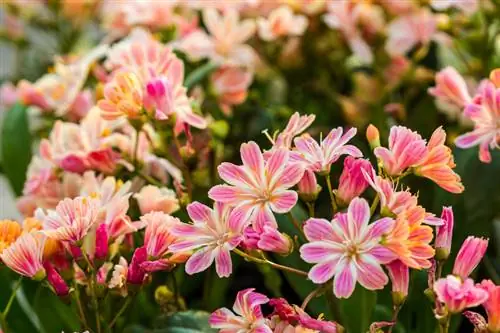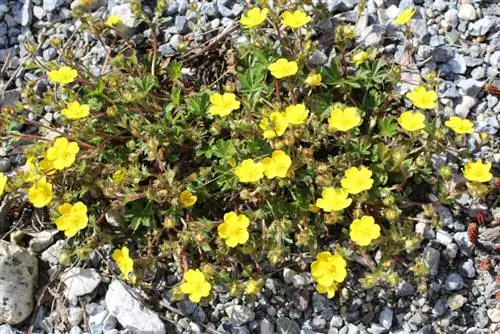- Author admin [email protected].
- Public 2023-12-16 16:46.
- Last modified 2025-01-23 11:20.
Chive garlic can be planted and propagated without any difficulties or challenges. But what happens to this versatile herb in winter? Does it need to be kept at home or protected outside?
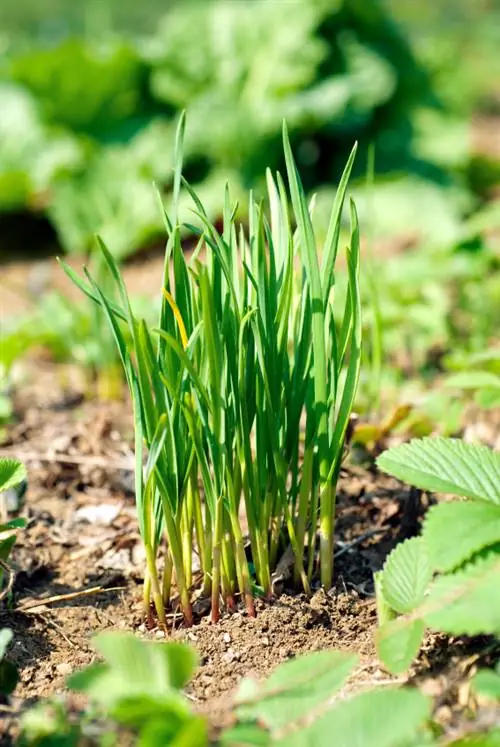
Is chives hardy and how do I protect it in winter?
Cut garlic is hardy and can withstand temperatures down to -17 °C in sheltered locations or down to -12 °C in unprotected locations. In winter, protect the plant with leaves, brushwood, fleece cover, compost or bark mulch to prevent freezing.
Dead above ground and dormant underground
Chive garlic is similar to chives in terms of winter hardiness and care. In this country it tolerates frost and for this reason can be described as perennial. Its above-ground parts of the plant - the grass-like leaves, the flowers and fruit stalks - die above ground. You would like to believe that the plant is dead. But this is a fallacy. Their roots survive beneath the surface of the earth.
Which sub-zero temperatures cause problems for chives?
If the temperatures drop to -20 °C in winter, the chives can no longer be saved. Such low values and those below mean his certain end if he has not received protection in the form of brushwood, leaves, etc.
The herb can tolerate temperatures down to -17 °C in sheltered locations. If it is in an unprotected and drafty location, it can cope with temperatures down to -12 °C. It is therefore worth planting the chives in a warm and protected location. Therefore, his survival is less risky.
What precautionary measures should be taken?
If you have chives in a pot outside on the windowsill, balcony or terrace, you should give the plant a little attention in autumn. Before the first frost arrives, cut the plant down. Then wrap the pot with fleece. Equipped with this protection, the chives survive the winter.
If you have planted chives outdoors in a rough location, such as in the mountains, you can protect the root area in winter with the following materials:
- Leaves
- brushwood
- Fleece cover
- Compost
- Bark mulch
Tips & Tricks
Before winter is around the corner, it is advisable to cut off the fruit stalks. The seeds contained can be used to propagate chives the following year.

